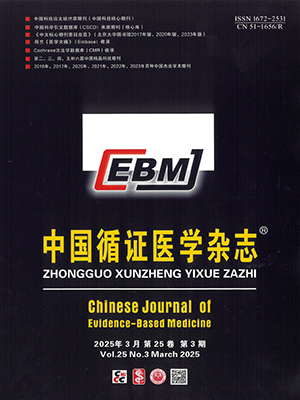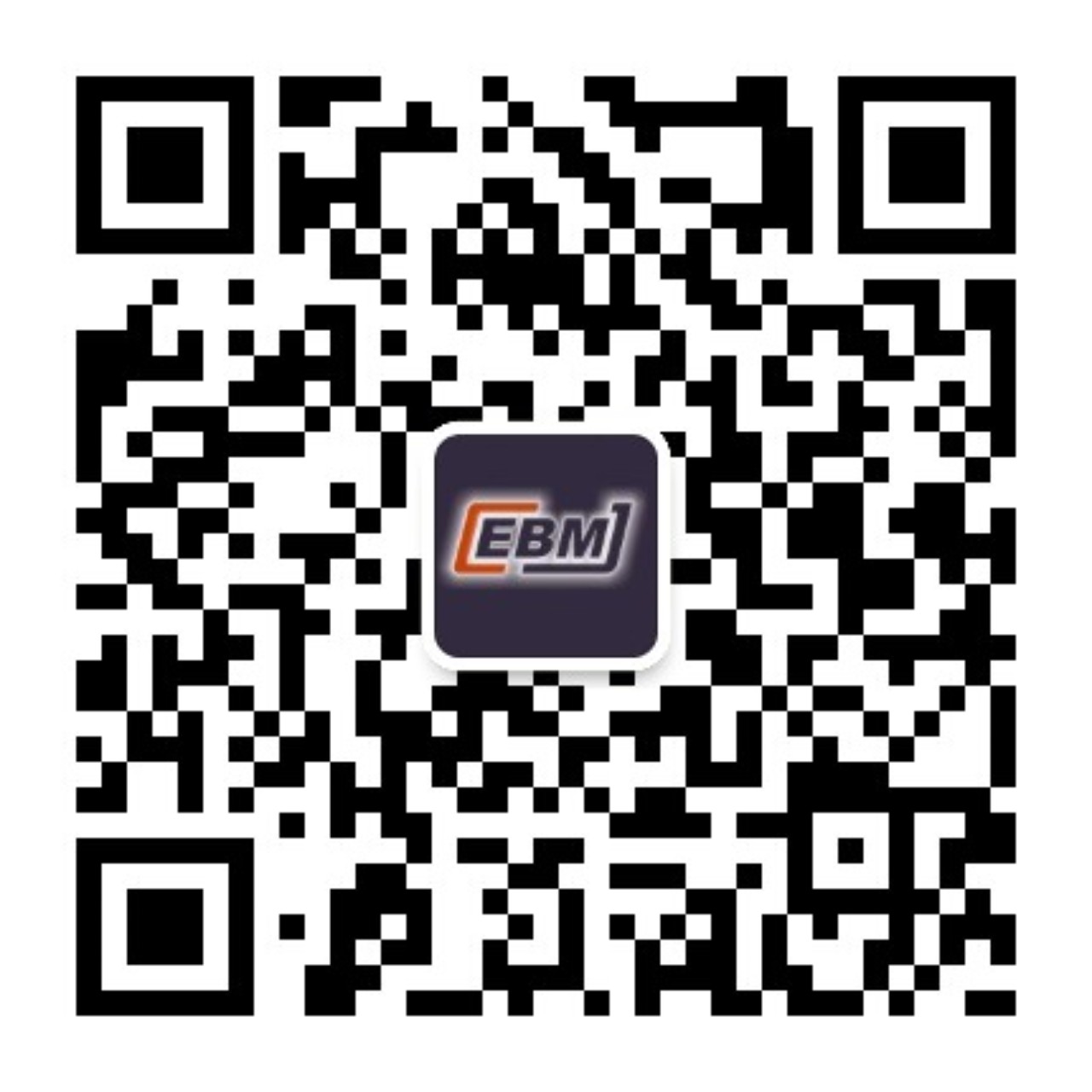| 1. |
Mancia G, De Backer G, Dominiczak A, et al. 2007 Guidelines for the management of arterial hypertension: The Task Force for the Management of Arterial Hypertension of the European Society of Hypertension (ESH) and of the European Society of Cardiology (ESC). Eur Heart J, 2007, 28(12): 1462-1536.
|
| 2. |
Shaneyfelt TM, Mayo-Smith MF, Rothwangl J. Are guidelines following guidelines? The methodological quality of clinical practice guidelines in the peer-reviewed medical literature. JAMA, 1999, 281(20): 1900-1905.
|
| 3. |
Grilli R, Magrini N, Penna A, et al. Practice guidelines developed by specialty societies: the need for a critical appraisal. Lancet, 2000, 355(9198): 103-106.
|
| 4. |
Graham ID, Beardall S, Carter AO, et al. What is the quality of drug therapy clinical practice guidelines in Canada? CMAJ, 2001, 165(2): 157-163.
|
| 5. |
McAlister FA, Campbell NR, Zarnke K, et al. The management of hypertension in Canada: a review of current guidelines, their shortcomings and implications for the future. CMAJ, 2001, 164(4): 517-522.
|
| 6. |
Burgers JS, Fervers B, Haugh M, et al. International assessment of the quality of clinical practice guidelines in oncology using the Appraisal of Guidelines and Research and Evaluation Instrument. J Clin Oncol, 2004, 22(10): 2000-2007.
|
| 7. |
Carneiro AV. Methodological appraisal of guideline. The AGREE instrument. Rev Port Cardiol, 2004, 23(3): 447-456.
|
| 8. |
Wegman A, vander Windt D, van Tulder M, et al. Nonsteroidal antiinflammatory drugs or acetaminophen for osteoarthritis of the hip or knee? A systematic review of evidence and guidelines. J Rheumatol, 2004, 31(2): 344-354.
|
| 9. |
Fervers B, Burgers JS, Haugh MC, et al. Predictors of high quality clinical practice guidelines: examples in oncology. Int J Qual Health Care, 2005, 17(2): 123-132.
|
| 10. |
Burgers JS, Cluzeau FA, Hanna SE, et al. Towards evidence-based clinical practice: an international survey of 18 clinical guideline programs. Int Qual Health Care, 2003, 15(1): 31-45.
|
| 11. |
Choudhry NK, Stelfox HT, Detsky AS. Relationships between authors of clinical practice guidelines and the pharmaceutical industry. JAMA, 2002, 287(5): 612-617.
|
| 12. |
Graf C, Wager E, Bowman A, et al. Best Practice Guidelines on Publication Ethics: a Publisher’s Perspectives. Int J Clin Pract, 2007, (Suppl 152): S1-26.
|
| 13. |
Jackson G. Conflict of interest: full disclosure is essential. Int J Clin Pract, 2006, 60(10): 1147-1148.
|
| 14. |
Steinbrook R. Guidance for Guidelines? N Engl J Med, 2007, 356(4): 331-333.
|
| 15. |
Watine J, Friedberg B, Nagy E, et al. Conflict between guideline methodologic quality and recommendation validity: A potential problem for practitioners. Clin Chem, 2006, 52(1): 65-72.
|
| 16. |
Boluyt N, Lincke CR, Offringa M. Quality of evidence-based pediatric guidelines. Pediatrics, 2005, 115(5): 1378-1391.
|
| 17. |
MacDermid JC, Brooks D, Solway S, et al. Reliability and validity of the AGREE, instrument used by physical therapists in assessment of clinical practice guidelines. BMC Health Serv Res, 2005, 5(7): 18.
|
| 18. |
Vasan RS, Beiser A, Seshadri S, et al. Residual lifetime risk for developing hypertension in middle-aged women and men: The Framingham Heart Study. JAMA, 2002, 287(16): 1003-1010.
|
| 19. |
陈捷, 赵秀丽, 武峰, 等. 我国14省市中老年人肥胖超重流行现状及其与高血压患病率的关系. 中华医学杂志, 2005, 85(40): 2830-2834.
|
| 20. |
中国高血压防治指南修订委员会. 中国高血压防治指南2010. 中华心血管病杂志, 2011, 39(7): 579-616.
|
| 21. |
The ALLHAT officers and coordinators for the ALLHAT Collaborative research group. Major outcomes in high-risk hypertensive patients randomized to angiotensin converting enzyme inhibitor or calcium channel blocker vs diuretic. JAMA, 2002, 288(23): 2981-2997.
|
| 22. |
Psaty B, Lumley T, Furberg C, et al. Health outcomes associated with various antihypertensive therapies used as first-line agents, a network meta-analysis. JAMA, 2003, 289(19): 2534-2544.
|
| 23. |
SHEP Cooperating Group. Prevention of stroke by antihypertensivedrug treatment in older persons with isolated systolic hypertension. Final results of the Systolic Hypertension in the Elderly Program (SHEP). JAMA, 1991, 265(24): 3255-3264.
|
| 24. |
Dahlof B, Lindholm LH, Hansson L, et al. Morbidity and mortality in the Swedish Trial in Old Patients with Hypertension (STOP-Hypertension). Lancet, 1991, 338(8778): 1281-1285.
|
| 25. |
Liu LS, Caguioa ES, Park CG, et al. Reducing stroke risk in hypertensive patients: Asian Consensus Conference recommendations. Int J Stroke, 2006, 1(3): 150-157.
|
| 26. |
Dahlöf B, Sever PS, Poulter NR, et al. Prevention of cardiovascular events with an antihypertensive regimen of amlodipine adding perindopril as required versus atenolol adding bendroflumethiazide as required, in the Anglo-Scandinavian Cardiac Outcomes Trial-Blood Pressure Lowering Arm (ASCOT-BPLA): a multicentre randomised controlled trial.; ASCOT Investigators. Lancet, 2005, 366(9489): 895-906.
|
| 27. |
Turnbull F, Blood Pressure Lowering Treatment Trialists’ Collaboration. Effects of different blood-pressure-lowering regimens on major cardiovascular events: results of prospectively-designed overviews of randomised trials. Lancet, 2003, 362(9395): 1527-1535.
|
| 28. |
Lindholm LH, Ibsen H, Dahlöf B, et al. LIFE Study Group. Cardiovascular morbidity and mortality in the Losartan Intervention For Endpoint reduction in hypertension study (LIFE): a randomized trial against atenolol. Lancet, 2002, 359(9311): 1004-1010.
|
| 29. |
Messerli FH, Staessen JA. Amlodipine better than lisinopril? How one randomized clinical trial ended fallacies from observational studies. Hypertension, 2006, 48(3): 359-361.
|
| 30. |
Liu LS, Zhan YQ, Li GZ. The Felodipine Event Reduction (FEVER) Study: a randomized long-term placebo-controlled trial Chinese hypertensive patients. J Hypertens, 2005, 23(12): 2145-2146.
|
| 31. |
Khan N, McAlister FA. Re-examining the efficacy of beta-blockers for the treatment of hypertension: a meta-analysis. CMAJ, 2006, 174(12): 1737-1742.
|
| 32. |
Lindholm LH, Carlberg B, Samuelsson O. Should beta blockers remain first choice in the treatment of primary hypertension? A meta-analysis. Lancet, 2005, 366(9496): 1545-1553.
|
| 33. |
Bangalore S, Sawhney S, Messerli FH. Relation of beta-blocker-induced heart rate lowering and cardioprotection in hypertension. J Am Coll Cardiol, 2008, 52(18): 1482-1489.
|
| 34. |
Mancia G, Laurent S, Agabiti-Rosei E, et al. Reappraisal of European guidelines on hypertension management: a European Society of Hypertension Task Force document. Blood Press, 2009, 18(6): 308-347.
|
| 35. |
Bakris GL, Fonseca V, Katholi RE, et al. Metabolic effects of carvedilol vs metoprolol in patients with Type 2 diabetes mellitus and hypertension: a randomized controlled trial. JAMA, 2004, 292(18): 2227-2236.
|
| 36. |
Gupta AK, Poulter NR, Dobson J, et al. Ethnic differences in blood pressure response to first and second-line antihypertensive therapies in patients randomized in the ASCOT Trial. Am J Hypertens, 2010, 23(9): 1023-1030.
|
| 37. |
Seedat YK. Varying response to hypotensive agents in different racial group: black versus white differences. J Hypertens, 1989, 7(7): 515-518.
|
| 38. |
Seedat YK. Trial of atenolol and chlorthalidone for hypertension in black South Africans. BMJ, 1980, 281(6250): 1241-1243.
|
| 39. |
Parag KB. Do angiotensin-converting enzyme inhibitors work in black hypertensives? A review. J Hum Hypertens, 1990, 4(4): 450-452.
|
| 40. |
Neutel JM. The role of combination therapy in the management of hypertension. Nephrol Dial Transplant, 2006, 21(6): 1469-1474.
|
| 41. |
Gradman AH, Basile JN, Carter BL, et al. Combination therapy in hypertension. J Am Soc Hypertens, 2010, 4(2): 42-50.
|
| 42. |
Hansson L, Zanchetti A, Carruthers SG, et al. Effects of intensive blood-pressure lowering and low-dose aspirin in patients with hypertension: principal results of the Hypertension Optimal Treatment (HOT) randomised trial. Lancet, 1998, 351(9118): 1755-1762.
|
| 43. |
Gradman AH, Kad R. Renin inhibition in hypertension. J Am Coll Cardiol, 2008, 51(5): 519-528.
|
| 44. |
Mackay JH, Arcuri KE, Goldberg AI, et al. Losartan and low-dose hydrochlorothiazide in patients with essential hypertension. Arch Intern Med, 1996, 156(3): 278-285.
|
| 45. |
Frishman WH, Ram CVS, McMahon FG, et al. Comparisonof amlodipine and benazepril monotherapy to amlodipine plus benazepril in patients with systemic hypertension: a randomized, double-blind, placebocontrolled, parallel-group study. J Clin Pharmacol, 1995, 35(11): 1060-1066.
|
| 46. |
Chrysant SG, Melino M, Karki S, et al. The combination of olmesartan medoxomil and amlodipine besylate in controlling high blood pressure: COACH, a randomized, double-blind, controlled, 8-week factorial efficacy and safety study. Clin Ther, 2008, 30(4): 587-604.
|
| 47. |
Salvetti A, Magagna A, Innocenti P, et al. The combinationof chlorthalidone with nifedipine does not exert an additive antihypertensive effect in essential hypertensives: a crossover multicenter study. J Cardiovasc Pharmacol, 1991, 17(2): 332-335.
|
| 48. |
Weir MR, WeberMA, Punzi HA, et al. A dose escalation trial comparing the combination of diltiazem SR and hydrochlorothiazide with the monotherapies in patients with essential hypertension. J Hum Hypertens, 1992, 6(8): 133-138.
|
| 49. |
Julius S, Kjeldsen SE, Weber M, et al. for the VALUE Trial Group. Outcomes in hypertensive patients at high cardiovascular risk treated with regimens based on valsartan or amlodipine: theVALUE randomised trial. Lancet, 2004, 363(11): 2022-2031.
|
| 50. |
Frishman WH, Bryzinski BS, Coulson LR, et al. Amultifactorial trial design to assess combination therapy in hypertension. Arch Intern Med, 1994, 154(76): 1461-1468.
|
| 51. |
Bateman DN, Dean CR, Mucklow JC, et al. Atenolol and chlorthalidone in combination for hypertension. Br J Clin Pharmacol, 1979, 7(9): 357-633.
|
| 52. |
Lacourcière Y, Arnott W. Placebo-controlled comparison of the effects of nebivolol and low-dose hydrochlorothiazide as monotherapies and in combination on blood pressure and lipid profile in hypertensive patients. J Hum Hypertens, 1994, 8(26): 283-288.
|
| 53. |
Gradman AH. Drug combinations. In: Izzo Jr JL, Black HR, Sica DA, editors. Hypertension primer. 4th Edition. Philadelphia PA: Lippincott, Williams, and Wilkins, 2008.
|
| 54. |
Brown MJ, Castaigne A, Ruilope LM, et al. INSIGHT: international nifedipine GITS study intervention as a goal in hypertension treatment. J Hum Hypertens, 1996, 10(Suppl 3): S157-S160.
|
| 55. |
Gong L, Zhang W, Zhu Y, et al. Shanghai trial of nifedipine in the elderly (STONE). J Hypertens, 1996, 14(10): 1237-1245.
|
| 56. |
Wang JG, Staessen JA, Gong L, et al. Chinese trial on isolated systolic hypertension in the eldrely. Systolic Hypertension in China (Syst-China) Collaborative Group. Arch Intern Med, 2000, 160(2): 211-220.
|
| 57. |
Wang W, Ma LY, Liu MB, et al. CHIEF Cooperative Group. Effects of amlodipine plus telmisartan or amlodipine plus amiloride regimen on blood pressure control in hypertensive patients: preliminary report of Chinese Hypertension Intervention Efficacy (CHIEF) trial. Zhonghua Xin Xue Guan Bing Za Zhi, 2009, 37(8): 701-707.
|




